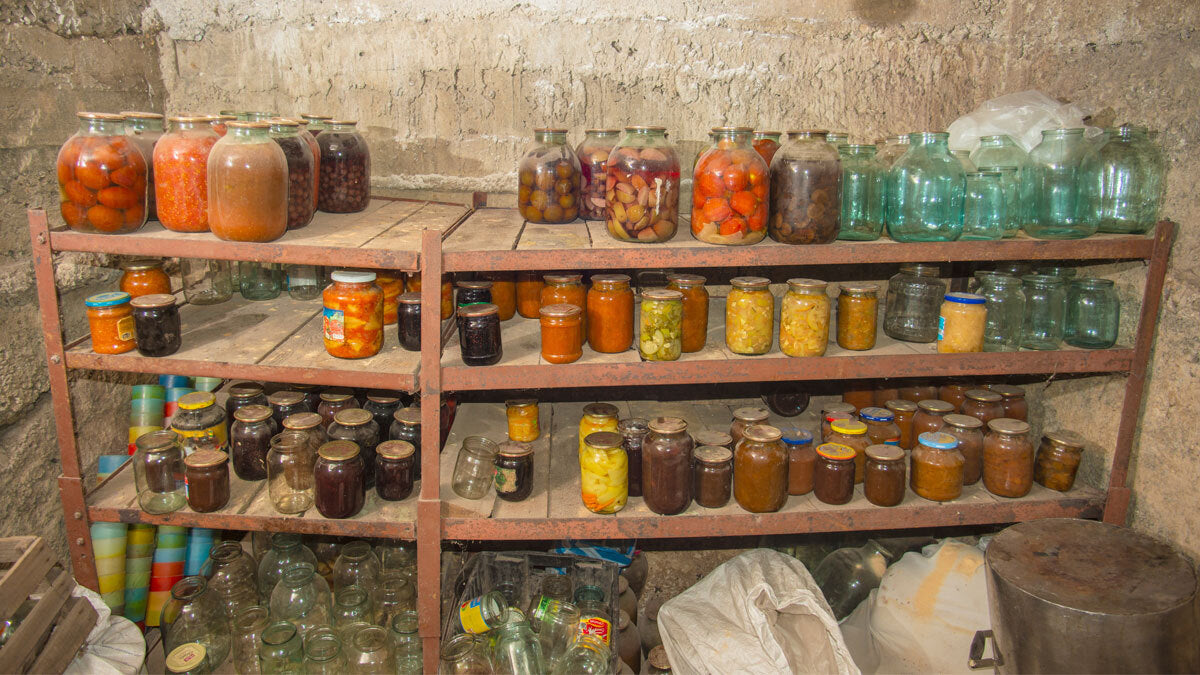Putting your food storage together is a tall order, especially if you have a large family. Once it’s complete, however, the sense of accomplishment and peace of mind is incredible.
But what happens if a flood wipes out your hard-earned food storage?
Whether it was because of a hurricane or a leaky pipe, losing your food storage can feel like a double loss. Those emergency preparedness supplies were supposed to see you through! Without your supply, how will you get through the disaster?
There is no way to completely prevent a flood from hitting your home; you can only do what you can to prepare and then hope for the best.
However, all may not be lost! There are some emergency foods that can survive a flood. The best solution, though, is still prevention. So read on to find out what foods might survive a flood and how you can help prevent the flooding in the first place.
[Related Read: Flood Preparedness]

What Food is Unsafe after a Flood?
Flood waters are extremely dangerous because they may contain pathogens like E.coli, Salmonella, Hepatitis A and norovirus. So, when in doubt about a food item, it is better to toss food and be on the safe side.
There are certain food items that absolutely must be thrown out after contact with floodwater.
- Meat, poultry, fish, and eggs
- Fresh produce
- Opened containers and packages
- Glass jars with carboard lid liners that were submerged and unopened (Mayonnaise, salad dressing, etc.)
- Containers with screw caps, snap lids, pull tops, and crimped caps
- Food in cardboard boxes, paper, foil, or cloth
- Cans that are leaking, bulging, dented, or rusted
- Home-canned foods
- Spices, extracts, and baking staples in canisters like flour, sugar, etc.
Not to mention any food that went bad in your refrigerator because the power went out.

What Food Survived?
After the flood, insurance companies will often declare things a total loss, but don't let that stop you from examining your food storage thoroughly.
MREs
The retort pouches used for MREs should withstand flooding. If you are worried about bacterial contamination from the floodwater, boiling the pouches before eating the contents will kill all the germs.
Commercial Canned and Jarred Goods
These commercial goods must be unopened and undamaged. If there are dents in the can or the jar has been unsealed, they will need to be thrown away. But if they are still unopened and in good condition, these cans and jars just need to be sanitized.
Sanitize these containers by:
- Label the container with its contents with indelible ink (like permanent marker).
- Remove all labels because the paper can harbor bacteria.
- Using a strong detergent solution, wash and scrub jars and cans.
- Immerse your containers in a sanitizing solution for 10 minutes.
- Air dry containers before opening.
Flood Prevention
The best way to save your food supply from a flood is to prevent it getting wet in the first place. These four basic preparatory measures can go a long way towards minimizing damage and protecting your food storage.
1. Don't assume that you will never experience flooding
When Hurricane Harvey hit Texas, areas that had never flooded before got several feet of water. Even if your home is well outside the flood plain, everyone can experience problems with rain gutters and leaky water heaters.

2. Perform simple maintenance on your home
Clean out your rain gutters regularly and affix extenders to your down spouts to keep water away from your window wells and your home’s foundation.
Several years ago, rain from clogged gutters fell directly into our window well. The water seeped through the seal around the window and flooded part of the basement.
Also, check periodically that your water heater is in working order. One specialist I know recommends replacing your water heater every ten years. He told me, “They're like ticking time bombs and when they go off, they go big.”
3. Store items appropriately
Irreplaceable items should not be stored in the basement – this goes for items with sentimental value as well as food storage. Moving goods to an upper floor will help protect your food.
Simple shelving can go a long way, too. If the flooding is only for two or three inches, shelves keep everything off the floor so it's not sitting in a puddle.
Raising refrigerators and freezers off the floor can also help. Simply place cement blocks under their corners to help keep the flood waters out.
4. Don't be afraid to build up your food storage again
When you have lost everything, including your food storage, it may feel useless and disheartening to try and build up your food storage again.
In June of 1976, muddy water from the Teton Dam swept away everything Bob had (not his real name). Bob and his family was able to stay with a friend during cleanup efforts.
One day Bob expressed his frustration, saying that he would never bother with food storage again, as it had all gone to waste in the destruction. His friend replied, “It's a good thing I had mine, then, since that's what you've been living on for the last two weeks.” Bob changed his tune after that.
These steps can help minimize the damage, especially in a small-scale flood. But even if you do lose all your food storage, don't panic.
Replacing carefully acquired food storage may feel overwhelming, but your preparations were absolutely NOT a total loss, even if the flood got to them.
If you were unable to use your food storage this time, you may still find yourself wanting food storage to fall back on in the future.

